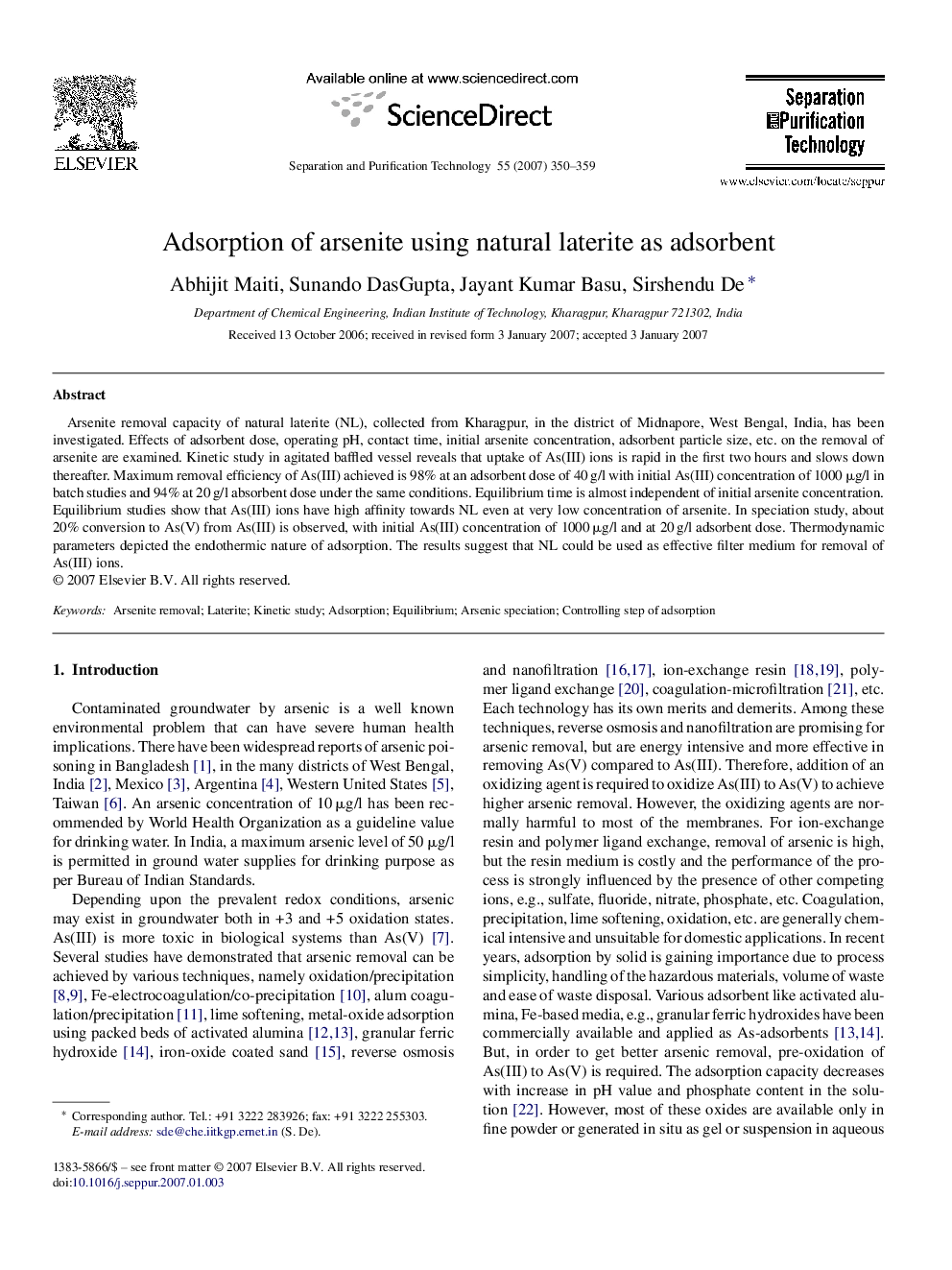| Article ID | Journal | Published Year | Pages | File Type |
|---|---|---|---|---|
| 644197 | Separation and Purification Technology | 2007 | 10 Pages |
Arsenite removal capacity of natural laterite (NL), collected from Kharagpur, in the district of Midnapore, West Bengal, India, has been investigated. Effects of adsorbent dose, operating pH, contact time, initial arsenite concentration, adsorbent particle size, etc. on the removal of arsenite are examined. Kinetic study in agitated baffled vessel reveals that uptake of As(III) ions is rapid in the first two hours and slows down thereafter. Maximum removal efficiency of As(III) achieved is 98% at an adsorbent dose of 40 g/l with initial As(III) concentration of 1000 μg/l in batch studies and 94% at 20 g/l absorbent dose under the same conditions. Equilibrium time is almost independent of initial arsenite concentration. Equilibrium studies show that As(III) ions have high affinity towards NL even at very low concentration of arsenite. In speciation study, about 20% conversion to As(V) from As(III) is observed, with initial As(III) concentration of 1000 μg/l and at 20 g/l adsorbent dose. Thermodynamic parameters depicted the endothermic nature of adsorption. The results suggest that NL could be used as effective filter medium for removal of As(III) ions.
